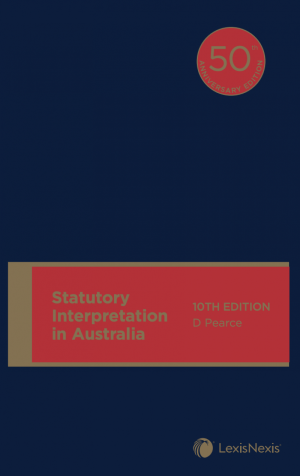We are now closed for the Christmas and New Year period, returning on Monday 5th January 2026. Orders placed during this time will be processed upon our return on 5th January.

Legislation is now the primary source of law in Australia. Nearly all legal transactions require attention to be given to Acts and other legislative instruments. An understanding of how legislation is to be interpreted is, thus, an essential part of every lawyer’s skill set.
For 50 years, courts, tribunals and legal practitioners have relied upon this text as their guide to the intricacies of statutory interpretation. In his Foreword to this 10th edition of Statutory Interpretation in Australia, Chief Justice Stephen Gageler AC of the High Court of Australia, has said:
“For the whole of my professional life, judges and practitioners have turned to Statutory Interpretation in Australia as a standard work of reference. A copy of the ninth edition sits on my shelf. So will a copy of this historic edition…
The separation of powers within our system of parliamentary democracy produces an inexorable relationship between the legislative and judicial branches of government. The legislative branch makes the law. The judicial branch declares and enforces the law as so made. The legislative branch speaks with constitutional authority. The judicial branch interprets with constitutional authority. The interpretation is through the application of consistent principles which can be taken to be known to the speaker. Through its clear and systematic identification and statement of those principles for half a century, Statutory Interpretation in Australia has contributed to the stability of that relationship.”